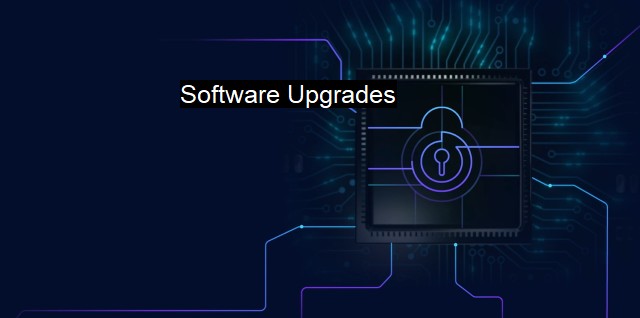What are Software Upgrades?
Exploring the Significance of Software Upgrades in Cybersecurity and Antivirus Protection: Understanding Coding, Patches, and System Enhancement
Software upgrades, as the term asserts, refer to the improvements or enhancements to various aspects of computer software. They constitute a critical component in maintaining the robustness and effectiveness of both cybersecurity measures and antivirus protection. Given that we live in the Digital Age where technological advancements are constantly racing against time, software upgrades help us combat the increasing threats and vulnerability cyberspace offers.A software upgrade is essentially a new version of an existing software product. It is designed to fix any bugs or glitches found in the previous version, enhance current features or introduce completely new features to adapt to emerging user demands. These upgrades can be iterations of functionally-rich enterprise application systems or something as simple as an updated user-interface in a smartphone app. But irrespective of the magnitude, behind every software upgrade lies an objective - enhancing productivity, functionality or security.
a software upgrade ensures consistent protection against evolving threats. With the vast dynamic world of the Internet continually getting complex, cybercriminals and hackers are constantly concocting sophisticated ways to exploit system vulnerabilities. Hence, cybersecurity software must continually adapt to counteract these new potential threats, and this necessitates the frequent upgrades.
An upgraded version of cybersecurity or antivirus software will include improved and more sophisticated threat detection strategies, enabled by AI technologies like Machine Learning and Deep Learning, often at times. Updates might also include minor patches or fixes for potential vulnerability areas in the software itself. Cybersecurity breaches do not always have to penetrate from outside; instead, they can exploit a system’s internal vulnerabilities. Thus, software upgrades can ensure robust internal checks and vulnerability assessment strategies.
An upgrade might also involve amendments to the software's cryptographic methods used for encoding and transmitting data. With quantum technologies posing a direct threat to the classical encryption strategies, cybersecurity software upgrades must stay a few steps ahead to guarantee foolproof protection.
Each software upgrade, especially related to cybersecurity and antivirus products, goes through rigorous testing phases before deployment. This testing involves penetration testing, where the software intentionally undergoes attempted breaches to check for any vulnerabilities. After completing these testings successfully, upgrades severely extend the software's resilience by eliminating potential weaknesses, making it virtually impenetrable.
Software upgrades in the context of cybersecurity and antivirus aren't an option; they are a necessity. The world is interconnected more than ever, fellowships, companies, and even governments increasingly find their existence and operations relying on cyberspace. Thus, everyone is a potential target for cyber threats, making cyber protection essential. And looking at the continual advancement in hacking methods, maintaining a regular update regime is necessary to ensure the software is equipped enough to handle the threats from malicious malware, ransomware, and hidden Trojan viruses.
Denying or delaying upgrades can expose the systems to numerous potential threats, exploiting the glitches in the outdated software; it can nullify all the investments made in previously implemented security and antivirus measures.
It is also essential for users to be aware and vigilant while upgrading the software, as sometimes, upgrades acting as deceptive strategies have been used by hackers to infiltrate Trojan viruses. It's necessary to check and ensure that the upgrade sources are authorized, genuine, and reliable. The user's ignorance or uninformed actions could be employed as a security loophole by cyber attackers.
Software upgrades in the context of cybersecurity and antivirus are crucial. They keep software recent, productive, and safe against any new potential threats. Upgraded software adapts to change, advances with time, dispels bugs and glitches, enhance its functionality, and more importantly, safeguards the entire operation from being violated and exploited due to outdated technology. It's an indispensable component in maintaining and upgrading cybersecurity armor in the ever-evolving world of the Internet. It lays the frontline defense against cyber threats, making it the foundation for achieving sustainable security in an increasingly connected digital sphere.

Software Upgrades FAQs
What is a software upgrade?
A software upgrade is a process of updating existing software with new features, fixes, and enhancements. Upgrades can improve system performance, add new functionality, or increase security.Why is it important to upgrade my antivirus software?
Upgrading your antivirus software is important because it ensures that you have the latest protection against emerging threats. Malware and viruses are constantly evolving, and antivirus software must be updated regularly to keep up with these changes. Failure to upgrade your antivirus software could leave your computer vulnerable to cyberattacks.Can software upgrades cause compatibility issues with other software?
Yes, software upgrades can cause compatibility issues with other software. This is why it's important to perform compatibility tests before installing upgrades. Some software upgrades may not work with older versions of operating systems or other programs, which could result in system errors or crashes.How often should I upgrade my cybersecurity software?
You should upgrade your cybersecurity software as soon as new updates become available. This is because cyber threats are constantly evolving, and software developers are always releasing updates to stay ahead of these threats. Waiting too long to upgrade your cybersecurity software could leave your system vulnerable to cyberattacks.| | A | | | B | | | C | | | D | | | E | | | F | | | G | | | H | | | I | | | J | | | K | | | L | | | M | |
| | N | | | O | | | P | | | Q | | | R | | | S | | | T | | | U | | | V | | | W | | | X | | | Y | | | Z | |
| | 1 | | | 2 | | | 3 | | | 4 | | | 7 | | | 8 | | |||||||